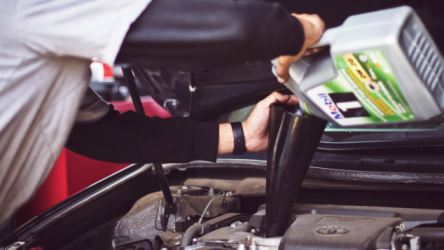
In today’s world, railcars still play a vital role in helping to keep the world economy running smoothly. Transporting almost everything you can imagine, it is important that tank cars be properly maintained so that breakdowns and delays do not take place. To do so, you need the proper fittings. If you’re ready to learn about fitting types as well as their uses and how they should be installed, welcome to Tank Car Fittings 101.
Liquid Transfer Applications
Since tank cars transport many different types of liquids, Hiltap fittings are needed to make sure liquid transfers are done quickly, safely, and securely. Including various couplings and connectors, these fittings are most often used with railcars that are transferring liquids commonly used in the petrochemical and aerospace industries. Able to endure temperature and pressure extremes that may be high or low, these fittings are made to be easily installed and very durable.
Couplers and Adaptors
If you have a railcar that will be transporting liquids of medium pressure, certain types of couplers and adaptors will need to be used as fittings. The most common include double and reducing couplers, flanged couplers, and spool adaptors. Available in many different sizes, you will need to work with a tank car fitting product supplier that has a large selection of specialized parts. The biggest advantages associated with medium-pressure couplers and adaptors include their ability to be interchangeable with one another, easy installation and maintenance, and are very lightweight.
Impact Unions
When you need dependable leakproof protection for railcars that will be transporting liquids of many different temperatures and pressures, impact unions will be necessary. Featuring reusable sealing components and wedge-to-wedge seals, these unions are made to be completely compliant with all current environmental rules and regulations. As for their benefits, the biggest is that these unions can be installed in close proximity to sensitive electronic equipment such as flow meters.
Pipe Connectors
Couplings that are all-purpose and lightweight, quick-coupling pipe connectors can also be used for different temperatures and pressures. As the temperature changes inside the railcar, these connectors adapt and enforce the seal, while simultaneously allowing for the venting of any residual pressure. Installation is easy since these connectors require only light torque to be tightened to pressure ratings.
Manway Covers
Manway covers provide easy access to the interior of a tank car for cleaning and inspection purposes. They typically have handles and lids that can be opened for quick loading, unloading, and emergency relief operations.
Safety Valves
Safety valves are designed to protect against unexpected pressure buildup within a tank car. They can be triggered manually or automatically depending on the type, and will immediately release pressure from within the tank when activated.
Vents
Vents help regulate air flow into and out of a tank car while transporting products to their destination. This helps prevent any unwanted buildups in pressure or vacuum during transit which could lead to dangerous situations if left unchecked.
Gauges
Gauges measure both temperature and pressure inside a tank car so operators can keep track of how much product is being stored or transported at any given time. This helps them better manage inventory levels as well as maintain a safe operating environment within the railcar.
Pressure Relief Valves
Pressure relief valves help to maintain the optimal pressure level within a tank car, which is important for protecting your cargo from heat or overpressure issues during transport. You’ll want to check your pressure relief valve from time to time to make sure it is always in working condition. Replace it immediately if needed.
Thermometers
Thermometers are essential for monitoring the temperature inside the tank car during transport. They often come in digital or mechanical varieties and can be mounted on the outside of the tank for easy reading. Check your vehicle’s temperature often to keep it maintained and safe.
Installation Tips
Installing tank car fittings is no small task! Here are some tips to make sure you get it done right every time:
- Make sure all components fit properly before installing them – This may sound obvious but it’s something that is often overlooked. Always double check that all parts fit together properly before beginning installation as this will save you time in the long run if something doesn’t fit correctly after assembly has begun.
- Use proper tools for each component – Different components require different tools for installation so make sure you have the right ones on hand before starting work! • Follow manufacturer guidelines closely – Every component is different so always follow manufacturer guidelines when installing them so you don’t risk damaging anything in the process.
- Test all components after installation – Once everything is installed, take some time to test each component individually to make sure everything works properly before putting it into use.
Should a leak occur when a railcar is transporting any type of liquid, you know the results can be not only inconvenient but also potentially hazardous to individuals and the environment. By knowing everything you can about tank car fittings, you’ll have railcars that are prepared to handle anything.







